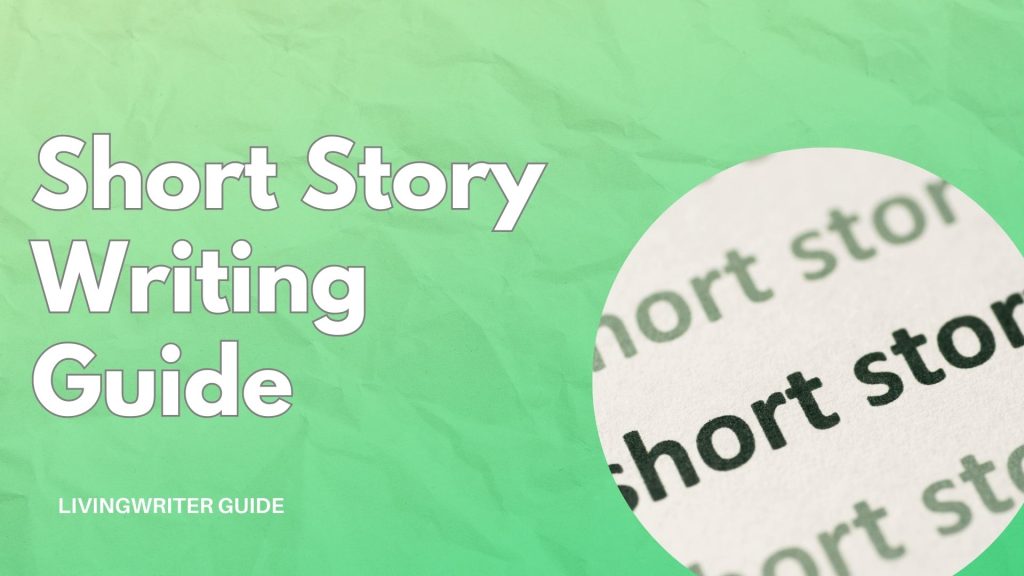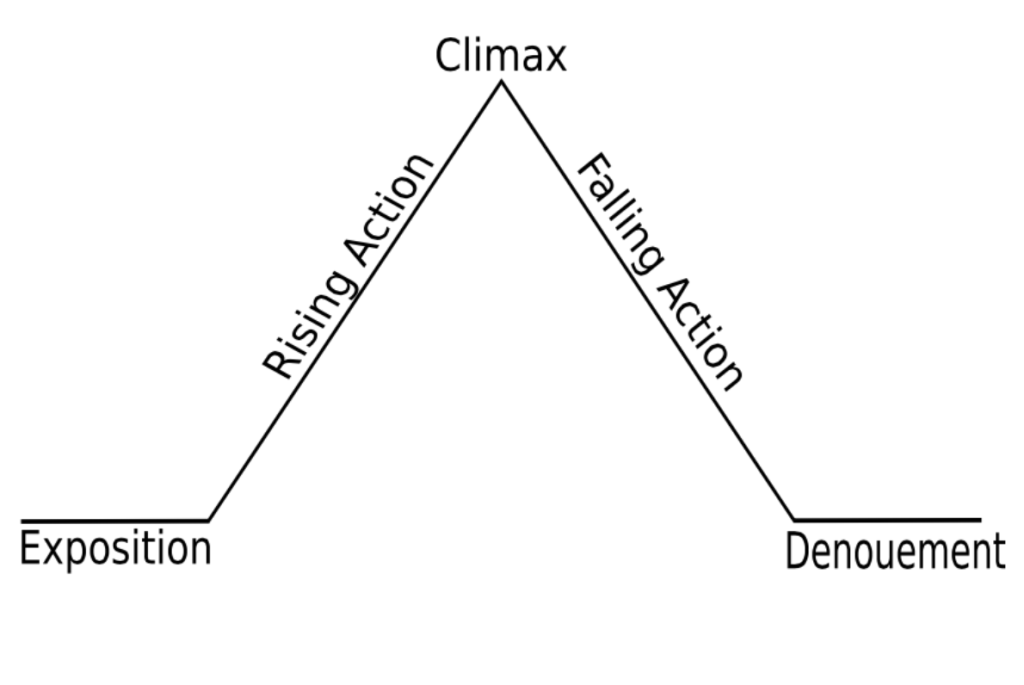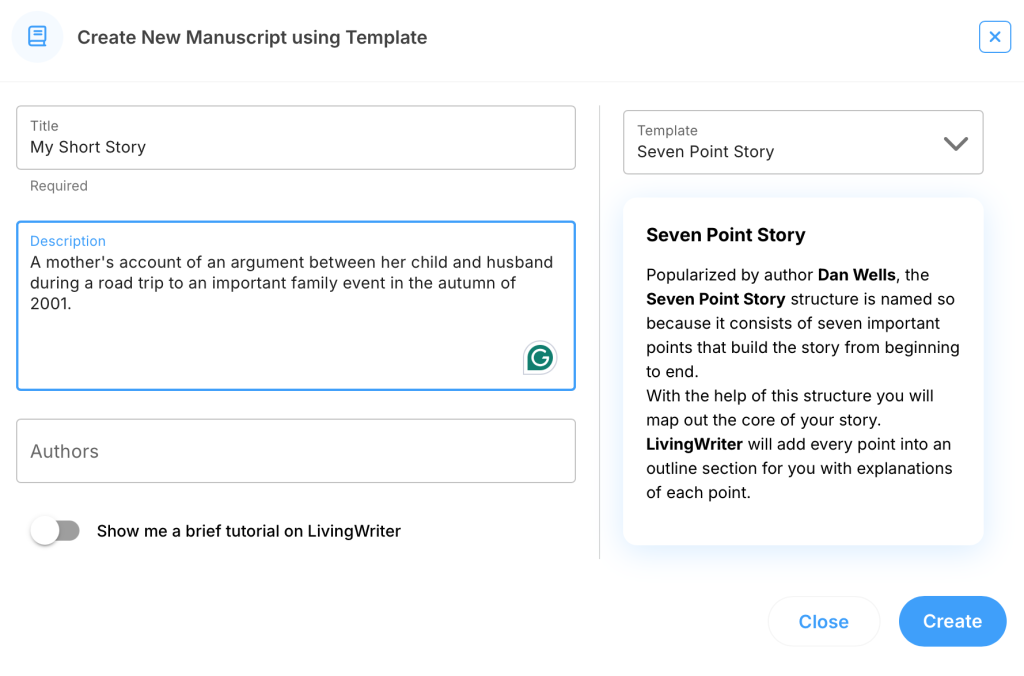How To Write A Short Story – 9 Easy Steps

Short stories might be my favorite medium of fiction to read and write. I find them to offer a bit more freedom than novels do – There are fewer rules, so to speak. While this is nice, it can also leave the medium feeling like the Wild West in terms of guidance. Today, I would like to remedy this with a 9-step guide on how to write a short story. Let’s get right in.
Table of Contents
How To Write A Short Story
This brilliant blueprint for short stories comes from short story guru Antonya Nelson. It works so well because it isn’t a rigid framework. So, you still have that freedom, but with plenty of guidance, too. Without further ado, let’s get started with step 1.
Step 1 – Write About A Real Experience

Writing about something that has actually happened to you helps in several ways. It’s a free plot that you don’t have to spend too much time coming up with or refining. Plus, since it comes from your life, it comes with built-in depth and authenticity that will translate to the page.
However, you’re not limited to exactly what happened in real life. Feel free to tweak things, embellish what happened, change the outcome, etc. The goal here is to draw from a real-life experience. So, sit down and think of some interesting things from your life – It shouldn’t be too hard.
Step 2 – Write The Story From A Different POV

Antonya Nelson is a genius. For step 2, you’re going to pick a different point of view for your story than the original. Let’s say your story is based on a fight you had with your dad. Of course, you experienced this from your perspective.
Well, write the story from the dad’s point of view. Or the mom’s or a sibling’s. There are a lot of options here – Just be sure to pick someone who has something at stake in the story. Play with this step, and you may find that a new POV can turn a good story into a great one.
Plus, this is a great way to practice using POV in fiction, in general, and can help you level up your skills.
Step 3 – Create A Ticking Clock

Creating a “ticking clock” means putting some finite timeline on the story from pretty early on. A summer romance, finding a date before prom, etc., all pressure the story. These (often short) timelines create tension and naturally build to a climax for the characters and readers.
Maybe that argument with Dad now happens during a road trip on the way to a family event. A wedding, funeral, graduation, or other important event where this unresolved conflict threatens to ruin it if it can’t be resolved in time.
Step 4 – Add Props Or Objects For Theme

Pick an object that means something to the story, tie it to the plot, and give it a theme. This can be a physical item in the plot or something more symbolic. Usually, this is something that represents something else – Something with the message of the story.
A compass, for example, could symbolize guidance, exploration, or finding one’s way. Birds that come up in different ways (some flying outside, others in a cage) could explore confinement, freedom, longing for escape, or the contrast between nature and civilization.
Just remember to be subtle. The most effective use of an object comes from weaving it throughout the story, using it to enhance the themes and emotions, and connecting it to the character’s journey in some way.
Step 5 – Transitional Step

This step refers to moving from one thing to another. And it is perhaps the hardest, or at least the most, technical step. A character is losing their job, they are moving, or someone dies; whatever it is, something changes, and because of that, other things begin.
Put another way, this step is where you put your finger on whatever shift occurs that sets the rest of the narrative in motion. You can find your moment by saying, “And then one day…” Using our running example, something like, “No one ever called Dad out for the things he said to Mom… And then, one day, I couldn’t hold my tongue.”
These same “inciting incidents” take place in novels and films but are often more prominent and more noticeable. For short stories, these can be quite small and even internal.
Step 6 – Add A World Event

For step 6, you want to add a world event or reference that teethers the story to something relatable. I mentioned a road trip to a family event above, and these are solid examples. Most people have been on a road trip or to a wedding or funeral. Including events people can relate to helps immerse them in the story.
You can also add bigger world events that place the story in a particular time and place, so long as they serve the story. Maybe your story takes place in the wake of the 9/11 attacks. Any reader who lived through that will relate to what the aftermath was like. Perhaps that’s why the family opted to drive instead of fly in our example story.
Step 7 – Add Binary Force

Step seven taps into the power of opposition, which is great for fiction. A good starting point for this is characters—innocent vs. experienced, educated vs. unreduced, open-minded vs. close-minded, loser and winner. You get the point.
Beyond characters, you can do this with concepts like duty vs. desire, good vs. evil, or logic vs. emotion. Regardless of your choice, adding opposing forces creates tension and conflict within the limited space a short story often has, without the need for extensive world-building or backstory.
Step 8 – Freytag’s Pyramid

Freytag’s Pyramid is a structure that breaks a story into five key parts:
- Exposition – Introduction of setting and characters
- Rising Action – Events leading to the climax
- Climax – The peak of tension
- Falling Action – Consequences of the climax
- Denouement – Resolution or conclusion
It’s often visualized as a pyramid because the tension rises to the climax and then falls towards the resolution.

If you work best with a story structure or your story needs one, Freytag’s Pyramid works well. An honorable alternative, which I cover in Novels Vs. Short Stories is the “7-point structure”. If you want a structure, either of these will work well.
However, many short stories don’t follow much of a structure, and that’s perfectly fine. Feel free to write your story without a set-in-stone structure if it’s working for you and that particular story. If you run into trouble, you can always fall back on one of the abovementioned structures.
Writing with LivingWriter gives you much more control over which structures you use. The LivingWriter outline options give you several structure options and then apply that framework to your manuscript to build your story within. Each option has a description of the structure, too.

LivingWriter has been voted the #1 Apps For Writing and The Best Book Writing Software. So, if you’re a writer and haven’t tried it, give it a shot. As a writer, I promise you won’t regret it.
Step 9 – Experiment

Consider something crazy. When you’re writing a novel, you have to be somewhat on the straight and narrow. After all, you’re asking readers to commit to 50,000 words. If you do something whacky, that might be a tall task with a long story.
With a short story, you can do whatever you want. Try the Hermit Crab method, where you borrow an existing form or structure—a “shell”—for the story. Like a hermit crab finds a shell to protect its body, you borrow a familiar format to give a unique shape to your story.
Some examples include writing your story as a recipe, a to-do list (or grocery list), or a social media post. For our example story so far, maybe you could do something like an Instructional or “how-to guide” on how to resolve a fight between a father and child.
Some other options include breaking the 4th wall, using an unreliable narrator, or writing with specific constraints like a particular word count. These things are game-changers for certain stories, but I don’t think they improve everything. That said, it never hurts to consider an interesting angle; if you find the traditional approach best, that works, too.
Conclusion
If you’re interested in writing short stories or looking for tips on how to write better short stories, I can’t recommend this 9-step approach enough. It really walks the line between a short story writing prompt and the freedom that makes short stories so fun to write.
Now, there is nothing left to do but get out there and try it out. If you do, comment below and let me know what you think and if you found it helpful. Until next time, take care and happy writing.